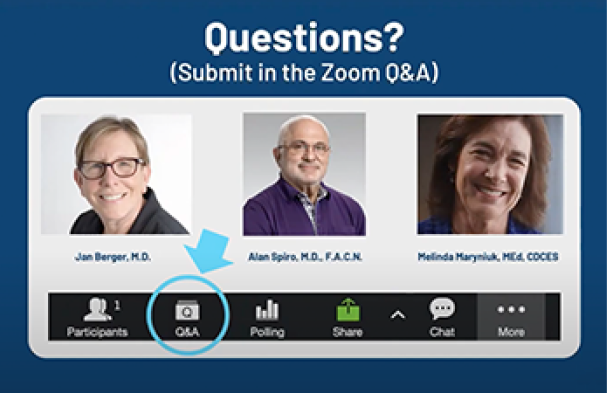
As we head down the path towards vaccination against COVID-19, another even larger and more terrifying health challenge continues—that of metabolic disease; prediabetes, diabetes, obesity and fatty liver disease. With cancelled holiday plans, stay-at-home orders and curfews leaving us feeling isolated and likely to trigger stress eating of unhealthy foods over the holidays, this collective change in our behaviors is the lesser-seen iceberg to an explosion of poor health outcomes in 2021.
In a shocking new report from The New York Times which offers an analysis of estimates from the Centers for Disease Control and Prevention, we learned that deaths from diabetes, high blood pressure and heart disease are up significantly this year. Most notably, deaths from diabetes are up 15 percent year-over-year even after taking into account the impact of COVID-19 and deaths from high blood pressure are up 11 percent. Plus, in several states, deaths attributed to diabetes are at least 20 percent above normal this year. With leading medical experts from the World Health Organization suggesting that the pandemic could last as long as 2.5 years in total, we are likely to see elevated levels of diagnosis for metabolic disease well into 2021. The change in routines and social paralysis that comes from state-directed mandates to stay indoors and keep 6 feet apart is clearly affecting us more than we might know.
However, the dystopian outlook doesn’t stop there. Let’s take diabetes as the highest single prevalence of metabolic disease. Right now, almost one in ten US adults has diabetes. That’s about 24 million Americans, already a significant number, and one-quarter of them do not know they have it until their doctor orders a blood test and the results come back with A1C at or above 6.5. Yet the number of Americans with diabetes is actually projected to double or triple by 2050 according to the latest predictions by the CDC cited in the Population Health Metrics journal, October 2020. The prevalence is expected to rise sharply over the next 40 years due to several factors including an aging population that is more likely to develop type 2 diabetes, increases in the population of minority groups that are at high risk for type 2 diabetes, and people with the disease living longer. This means, almost 1 in 3 US adults could have diabetes by 2050 if the current trends continue.
Plus, as those with diabetes know all-too-well, the disease often comes with complications and can ultimately make you more likely to present with symptoms of metabolic syndrome; defined as having at least 3 of obesity, high blood pressure, prediabetes and high cholesterol or triglycerides. Before the pandemic, metabolic syndrome was already known to be rising amongst US adults. More than half already have high blood pressure, also known as hypertension, and only one in four of these have their disease under control. In summary, our collective health appears to be declining sharply this year mainly through the combined, indirect effects of social distancing, a heavy reliance on government benefits and food scarcity.
Today, Employers and Payers are already carrying a heavy financial burden since people diagnosed with diabetes alone have more than twice the medical costs of those without the disease. This translates to an estimate of $174 billion spent annually on diabetes care, including $116 billion in direct medical costs. The CDC’s report covering predictions for the prevalence of diabetes by 2050 specifically calls out the role that effective prevention programs directed at groups at high risk of type 2 diabetes can play at considerably reducing future increases in diabetes.
Innovative solutions based on precision medicine, such as that used by DayTwo, which predicts a person’s individual blood glucose response to foods and enables a path to diabetes remission is the secret weapon that will help to bend the curve for metabolic disease.
So how does this type of solution actually work? The field of precision medicine is advancing fast on all fronts and this is certainly true for nutrition. DayTwo’s solution uses gut microbiome profiling to understand the abundance and variance of bacterial strains for each unique individual. Founded on the largest database of microbiome profiling in the world, which includes more than 65,000 patients, machine learning is then applied to the results and can accurately predict the blood glucose response to specific foods and meal combinations.
When a person understands which of the foods they eat can spike their blood sugar, they are empowered to make minor adjustments to their diet, such as adding a handful of almonds to their oatmeal at breakfast, that keeps their A1C levels within a healthy range. The DayTwo program is grounded in an individual’s family food culture and eating preferences, helping them to say “yes” to more foods as opposed to traditional diabetes prevention programs that require their members to cut out entire food categories such as carbohydrates which are found in pasta, rice and potatoes.
By contrast, DayTwo’s program offers a telehealth solution including weekly behavioral coaching sessions with a registered dietitian and a digital app to provide hyper-personalized food recommendations. Through this multi-faceted approach, the DayTwo program is able to enable a path to diabetes remission often times in a matter of months for some participants. If you would like to pilot DayTwo’s program with your population of employees or members contact us at daytwosolutions@daytwo.com


